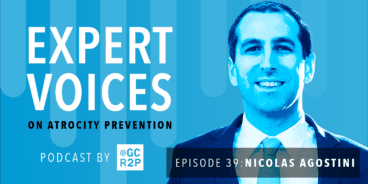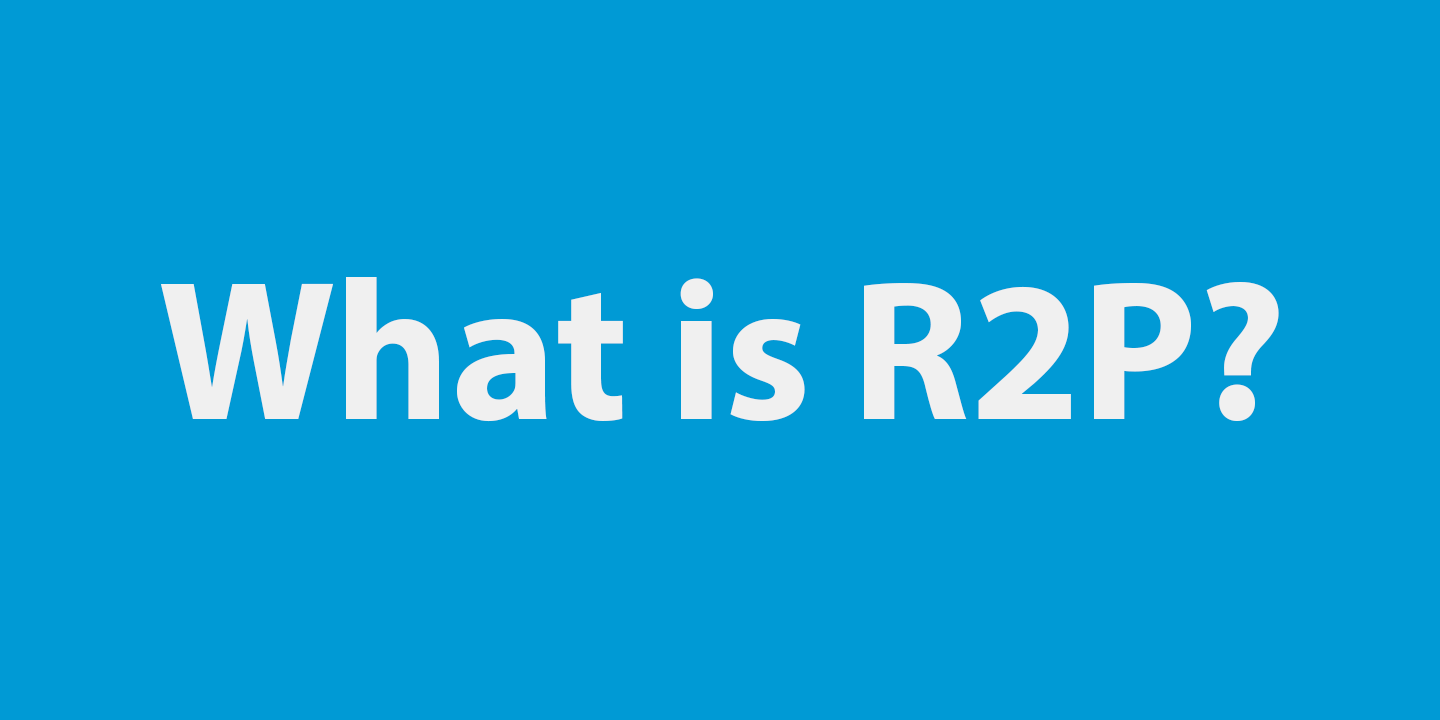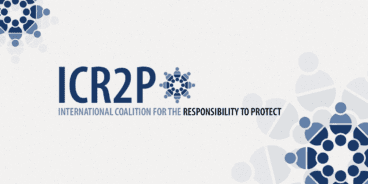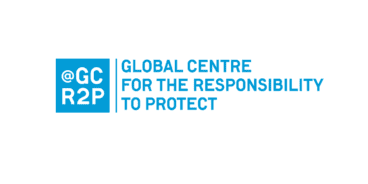

The Responsibility to Protect: A Background Briefing
WHAT IS THE RESPONSIBILITY TO PROTECT AND WHY DO WE NEED IT?
The United Nations (UN) was established in 1945 to prevent conflicts between states. But with the end of the Cold War, inter-state aggression largely gave way to war and violence within, rather than between, states. When, during the 1990s, horrific violence broke out inside the borders of such countries as Somalia, Rwanda and the former Yugoslavia, the world was ill-prepared to act and was paralyzed by disagreement over the limits of national sovereignty.
Throughout the 1990s, the UN was deeply divided between those who insisted on a right of humanitarian intervention and those who viewed such a doctrine as an indefensible infringement upon national sovereignty. At the time Secretary-General Kofi Annan warned that the UN risked discrediting itself if it failed to respond to catastrophes such as Rwanda and Srebrenica, and he challenged member states to agree on a legal and political framework for collective international action.
In 1999 the failure of the UN Security Council (UNSC) to authorize action to halt “ethnic cleansing” in Kosovo provoked NATO to initiate an aerial bombardment on its own. This deeply divided the international community, pitting those who denounced the intervention as illegal against others who argued that legality mattered less than the moral imperative to save lives. This deadlock implied a pair of unpalatable choices: either states could passively stand by and let mass killing happen in order to strictly preserve the letter of international law, or they could circumvent the UN Charter and unilaterally carry out an act of war on humanitarian grounds.
The 2001 report of the International Commission on Intervention and State Sovereignty (ICISS) formulated the alternative principle of “the responsibility to protect,” focusing not on the legal or moral “right” of outsiders to intervene but on the responsibility of all states to protect people at risk. In 2005 the UN World Summit unanimously accepted their “responsibility to protect populations from genocide, war crimes, ethnic cleansing and crimes against humanity.”
The Responsibility to Protect (R2P) concept sought to confront both the Rwanda tragedy and the Kosovo dilemma by stipulating that states have an obligation to protect their citizens from mass atrocity crimes; that the international community will assist them in doing so; and that, should the state be “manifestly failing” in its obligations, the international community is obliged to act.
R2P seeks to ensure that the international community never again fails to act in the face of genocide, ethnic cleansing, war crimes and crimes against humanity. By accepting a collective responsibility to protect, the international community issued a solemn pledge that it cannot lightly ignore.
WHAT FORMS OF HUMAN RIGHTS ABUSE DOES R2P SEEK TO ADDRESS?
The UN’s 2005 World Summit Outcome Document explicitly limits the application of R2P to four types of mass atrocity crimes: genocide, ethnic cleansing, war crimes and crimes against humanity.
R2P does not apply to other violations and abuses of human rights or grave threats to human security, whether from climate change, disease or many harmful and ruinous state policies, such as the suspension of civil liberties, endemic poverty, or mass corruption. Other human rights instruments, legal frameworks and institutions are better suited to address these pressing issues.
WHAT IS A MASS ATROCITY CRIME?
R2P applies to four mass atrocity crimes: genocide, war crimes, crimes against humanity and ethnic cleansing. The first three crimes are legally defined in various international legal documents, such as the 1948 Convention on the Prevention and Punishment of the Crime of Genocide, the 1949 Geneva Conventions and their 1977 Additional Protocols, and the 1998 Rome Statute of the International Criminal Court (ICC). Their status as international crimes is based on the belief that the acts associated with them affect the core dignity of human beings, both in times of peace and in times of war.
Genocide
Genocide means acts committed with intent to destroy, in whole or in part, a national, ethnic, racial or religious group, including:
-
- Killing members of the group;
- Causing serious bodily or mental harm to members of the group;
- Deliberately inflicting on the group conditions of life calculated to bring about its physical destruction in whole or in part;
- Imposing measures intended to prevent births within the group;
- Forcibly transferring children of the group to another group.
To constitute genocide, there must be a proven intent on the part of perpetrators to physically destroy a national, ethnic, racial or religious group. Victims of this crime are deliberately targeted because of their real or perceived membership of one of the four protected groups. Genocide can also be committed against only a part of the group, as long as that part is identifiable and “substantial.”
War crimes
There is no single document in international law that codifies all war crimes. Lists of war crimes can be found in both International Humanitarian Law (the Hague and Geneva Conventions) and International Criminal Law treaties (the Rome Statute of the ICC), as well as in international customary law. War crimes take place in the context of an armed conflict, either international or non-international (such as a civil war).
The Rome Statute makes a distinction between four categories of war crimes, depending on its character:
War crimes in international armed conflicts include:
-
- Grave breaches of the 1949 Geneva Conventions, such as:
- Willful killing, torture or inhuman treatment, or willfully causing great suffering or serious injury to body or health against the sick, wounded and shipwrecked persons not taking part in hostilities, prisoners of war and other detainees, civilians and civilian objects.
- Extensive destruction and appropriation of property, not justified by military necessity and carried out unlawfully and wantonly.
- Other serious violations of the laws and customs, such as:
- Intentionally directing attacks against the civilian population as such or against individual civilians not taking direct part in hostilities;
- Intentionally directing attacks against civilian objects, that is, objects which are not military objectives;
- Attacking or bombarding, by whatever means, towns, villages, dwellings or buildings which are undefended and which are not military objectives;
- Employing poison or poisoned weapons.
- Grave breaches of the 1949 Geneva Conventions, such as:
War crimes in non-international armed conflicts include:
-
- Serious violations of Article 3 common to the 1949 Geneva Conventions, such as:
- Violence to life and person, in particular murder of all kinds, mutilation, cruel treatment and torture of persons taking no active part in the hostilities, including members of armed forces who have laid down their arms and those placed hors de combat by sickness, wounds, detention, or any other cause against the sick, wounded and shipwrecked persons not taking part in hostilities, prisoners of war and other detainees, civilians and civilian objects.
- Other serious violations of the laws and customs, such as:
- Intentionally directing attacks against the civilian population as such or against individual civilians not taking direct part in hostilities;
- Intentionally directing attacks against buildings dedicated to religion, education, art, science or charitable purposes, historic monuments, hospitals and places where the sick and wounded are collected, provided they are not military objectives.
- Serious violations of Article 3 common to the 1949 Geneva Conventions, such as:
By contrast to genocide and crimes against humanity, war crimes can be committed against either combatants or non-combatants, depending upon the type of crime. In international armed conflicts, victims include wounded and sick members of armed forces in the field and at sea, prisoners of war and civilians. In the case of non-international armed conflicts, protection is afforded to persons taking no active part in the hostilities, including members of armed forces who have laid down their arms and those placed ‘hors de combat’ by sickness, wounds, or detention. In both types of conflicts protection is also afforded to medical and religious personnel, humanitarian workers and civil defense staff.
Crimes against humanity
Crimes against humanity have not yet been codified in a separate treaty of international law, unlike genocide and war crimes, although there are efforts to do so. The crime has, however, been clearly defined in the Rome Statute of the ICC.
The crime against humanity means acts committed as part of a widespread or systematic attack directed against any civilian population, such as:
-
- Murder;
- Extermination;
- Deportation or forcible transfer of population;
- Torture;
- Rape, sexual slavery, enforced prostitution, forced pregnancy, enforced sterilization, or any other form of sexual violence of comparable gravity;
- The crime of apartheid;
- Other inhumane acts of a similar character intentionally causing great suffering, or serious injury to body or to mental or physical health.
Crimes against humanity involve either large-scale violence in relation to the number of victims or its extension over a broad geographic area (widespread), or as part of a wider policy or plan (systematic). This excludes random, accidental or isolated acts of violence.
Ethnic cleansing
Ethnic cleansing has not been recognized as an independent crime under international law. The term surfaced in the context of the 1990’s conflict in the former Yugoslavia and has been used in resolutions of the UNSC and General Assembly. Notably, the term has also appeared in judgments and indictments of the International Criminal Tribunal for the Former Yugoslavia, although it did not constitute one of the counts for prosecution.
A UN Commission of Experts mandated to look into violations of International Humanitarian Law committed in the former Yugoslavia defined ethnic cleansing as “rendering an area ethnically homogeneous by using force or intimidation to remove persons of given groups from the area” and as “a purposeful policy designed by one ethnic or religious group to remove by violent and terror-inspiring means the civilian population of another ethnic or religious group from certain geographic areas.”
The Commission also stated that coercive practices used to remove the civilian population can include: murder, torture, arbitrary arrest and detention, extrajudicial executions, rape and sexual assaults, severe physical injury to civilians, forcible removal, displacement and deportation of civilian population, deliberate military attacks or threats of attacks on civilians and civilian areas, use of civilians as human shields, destruction of property, and robbery of personal property, as well as attacks on hospitals, medical personnel, and locations with the Red Cross/Red Crescent emblem.
HOW DOES R2P WORK?
At the heart of R2P is the principle that states must act to prevent mass atrocity crimes and protect all populations from risks related to their occurrence. When states lack the capacity to take such measures, the international community has a responsibility to provide assistance in doing so. Central is the idea that concerned outsiders should help states prevent these gross abuses through what the World Summit Outcome Document characterizes as “diplomatic, humanitarian and other peaceful means.” This includes strengthening state capacity through economic assistance, rule-of-law reform and the building of inclusive political institutions or, when violence seems imminent, through direct mediation. The intense diplomatic engagement following the disputed election in Kenya (2007) and the work of neighbors and the UN to support the government of Burundi as it addressed ethnic conflict (1995-2005) demonstrate cooperative efforts to prevent atrocities.
Only when such means have been clearly and demonstrably unsuccessful should the international community, acting through the UNSC, turn to coercive measures. These could include such measures as sanctions, arms embargoes or the threat to refer perpetrators to the ICC. Should peaceful means be inadequate and the state be manifestly failing or unwilling to protect its population, then-and only then-would the UNSC consider use of military force.
WHEN IS MILITARY FORCE JUSTIFIED?
Timely military intervention could have halted the genocidal horror in Rwanda. The ICISS report and the UN Secretary-General’s In Larger Freedom document proposed five “precautionary principles” or “criteria of legitimacy” to help guide possible military action under the UN Charter.
- Seriousness of harm. The threat of atrocities must be clear and extreme enough to justify military force;
- Proper purpose. The central purpose of the intervention must be to prevent or halt suffering;
- Last resort. Military force must be the last resort with every reasonable non-military option having been explored;
- Proportional means. The scale and duration of military action must be commensurate with the ends sought;
- Balance of consequences. Is there a reasonable chance of success in averting the threat of atrocities without worsening the situation?
No formal principles presently exist to guide UNSC decision-making on the use of force. These prudential criteria can and should, however, continue to inform public debate and deliberations among governments.
HOW DOES R2P AFFECT THE IDEA OF SOVEREIGNTY?
States have long accepted limits on their conduct, whether towards their own citizens or others. The UN’s Universal Declaration of Human Rights requires that states protect individual and social rights; the Geneva Conventions and various treaties and covenants prohibiting torture, human trafficking, slavery, or nuclear proliferation similarly restrict state behavior.
At the same time, there has been a shift in the understanding of sovereignty, spurred both by a growing sensitivity to human rights and by a reaction to mass atrocity crimes perpetrated against civilians by their own leaders.
Francis Deng, the former UN Special Adviser on the Prevention of Genocide and the former representative of the Secretary-General on internally displaced persons, developed the concept of “sovereignty as responsibility.” Chief among those responsibilities, Deng and others have argued, is the responsibility to protect citizens from genocide, war crimes, ethnic cleansing and crimes against humanity.
IS R2P A TOOL OF THE POWERFUL AGAINST THE WEAK?
Critics of R2P insist that it will never be applied to major powers, and thus it is undermined by inconsistency. However, R2P imposes obligations on all UN member states to prevent mass atrocity crimes.
R2P covers crimes occurring anywhere in the world, regardless of the status or prestige of the perpetrator. Given that the more powerful states have a far greater capacity to extend assistance – and far greater economic, diplomatic, logistical and military capacity – their responsibility to respond and react to mass atrocity crimes is arguably greater. R2P is fundamentally about protecting the weak (those subjected to mass atrocity crimes) from unconscionable abuse of power.
WHAT IS THE STANDING OF R2P IN INTERNATIONAL LAW?
R2P is not yet a rule of customary international law, but it builds upon existing legal foundations, including the Genocide Convention, and can be described as an international “norm.” A norm of international conduct is one that has gained wide acceptance among states and there could be no better demonstration of that acceptance in the case of R2P than the unanimously adopted language of the 2005 World Summit Outcome Document. Once a norm has gained not only formal acceptance but widespread usage, it can become part of “customary international law.”
WHAT IS THE STANDING OF R2P AT THE UN?
Since the 2005 World Summit the UN and its member states have aided in the evolution of R2P through actions that encourage wider acceptance of the norm and facilitate its implementation.
During August 2007 UN Secretary-General Ban Ki-moon appointed Dr. Edward Luck as his first Special Adviser on the Responsibility to Protect. Working closely with the Special Adviser on the Prevention of Genocide, the two Special Advisers and their Joint Office have helped advance R2P within the UN system. In July 2013 the Secretary-General appointed Dr. Jennifer Welsh as his second Special Adviser on the Responsibility to Protect, who was followed by Ivan Simonovic during October 2016 and Dr. Karen Smith during January 2019.
During November 2014 the Joint Office launched a new Framework of Analysis for Atrocity Crimes as a tool for prevention of mass atrocities.
The UN General Assembly held eight informal interactive dialogues on R2P between 2010 and 2017, as well as open debates in 2009, 2018 and 2019. Focusing on a thematic area, the UN Secretary-General released an annual report on R2P in advance of each of these discussions. Although a debate was scheduled for 2020, the COVID-19 pandemic prevented the General Assembly from meeting for the discussion.
The Secretary-General’s 2009 report, entitled Implementing the Responsibility to Protect, introduced a three-pillar strategy for R2P implementation. The three pillars are:
Pillar 1: Every state has the Responsibility to Protect its populations from the four mass atrocity crimes.
Pillar 2: The wider international community has the responsibility to encourage and assist individual states in meeting that responsibility.
Pillar 3: If a state is manifestly failing to protect its populations, the international community must be prepared to take appropriate collective action in a timely and decisive manner and in accordance with the UN Charter.
The three pillars have since served as a framework for discussing the different facets of prevention and response in mass atrocity risk situations and have been frequently invoked by member states when addressing R2P.
Member states have directly engaged with the R2P dialogue in many ways. Since 2009, more than 134 states and 6 regional organizations have participated in the UN General Assembly’s interactive dialogues on R2P. States also discuss R2P in other human rights forums, including in debates on the protection of civilians and at the Human Rights Council (HRC).
The Group of Friends of R2P is an informal cross-regional group of 53 UN member states that share a common interest in R2P and in advancing the norm within the UN-system. The Group of Friends made its first ever joint statement at the 2014 UN General Assembly Informal Interactive Dialogue on R2P. A Geneva-based Group of Friends was launched at the HRC during 2015, mirroring the membership of the New York-based group.
R2P continues to evolve both politically and legally. It has been formally invoked by the HRC, General Assembly and UNSC. As of January 2021, R2P has been invoked in 91 UNSC resolutions, 25 General Assembly resolutions, and 52 HRC resolutions. These resolutions have addressed situations such as Central African Republic, Côte d’Ivoire, Libya, Mali, Democratic Republic of the Congo, Somalia, South Sudan and Syria – as well as thematic issues such as the Protection of Civilians, Prevention of Genocide, Small Arms and Light Weapons, Threats to International Peace and Security Caused by Terrorist Acts, and the Protection of Healthcare in Conflict. During July 2020 the HRC adopted its first stand-alone resolution on R2P.
WHERE DO WE GO FROM HERE?
There are three major challenges as we continue to move R2P from theory to practice. The first is conceptual – to ensure that the scope, and limits, of the norm as it has evolved are well understood in all parts of the world. As new mass atrocity risk situations arise, there needs to be broad international consensus about how to respond in the context of R2P.
The second challenge is institutional. There is a need to ensure that governments and intergovernmental organizations have available all the diplomatic, civilian and, as a last resort, military capability needed to ensure effective early warning and timely action. We need international institutions with a capacity to provide essential assistance to those countries who need it and to people desperately in need of protection.
Since 2005 some governments have taken important steps towards implementing R2P domestically, including through the appointment of a national R2P Focal Point. A national R2P Focal Point is a senior government official who facilitates domestic mechanisms for atrocity prevention. R2P Focal Points also engage in international cooperation by participating in a Global Network of R2P Focal Points. As of January 2021, 61 member states and two regional organizations, the European Union and Organization of American States, had appointed an R2P Focal Point.
The third challenge is political. In every case where atrocities have occurred and R2P has been invoked since 2005, the difference between success (Kenya, The Gambia, Cote d’Ivoire, etc.) and failure (Syria, Myanmar, etc.) has depended upon political leadership and timely action by the UNSC, working with a committed regional organization. We need to ensure that whenever and wherever atrocity crimes are threatened, the necessary commitment will be there from international decision-makers. This means having consensual international arrangements in place for effective mobilization by both governments and civil society. It also requires that there is consistency in the application of R2P.
The international community will continue to encounter difficult when confronting mass atrocity crimes. Crises threatening human security continue to arise, and with them debates over the most appropriate response. But R2P remains the best hope for those who aspire for a world free from genocide, war crimes, ethnic cleansing and crimes against humanity. R2P represents a potential historic end to impunity, injustice and inaction.

